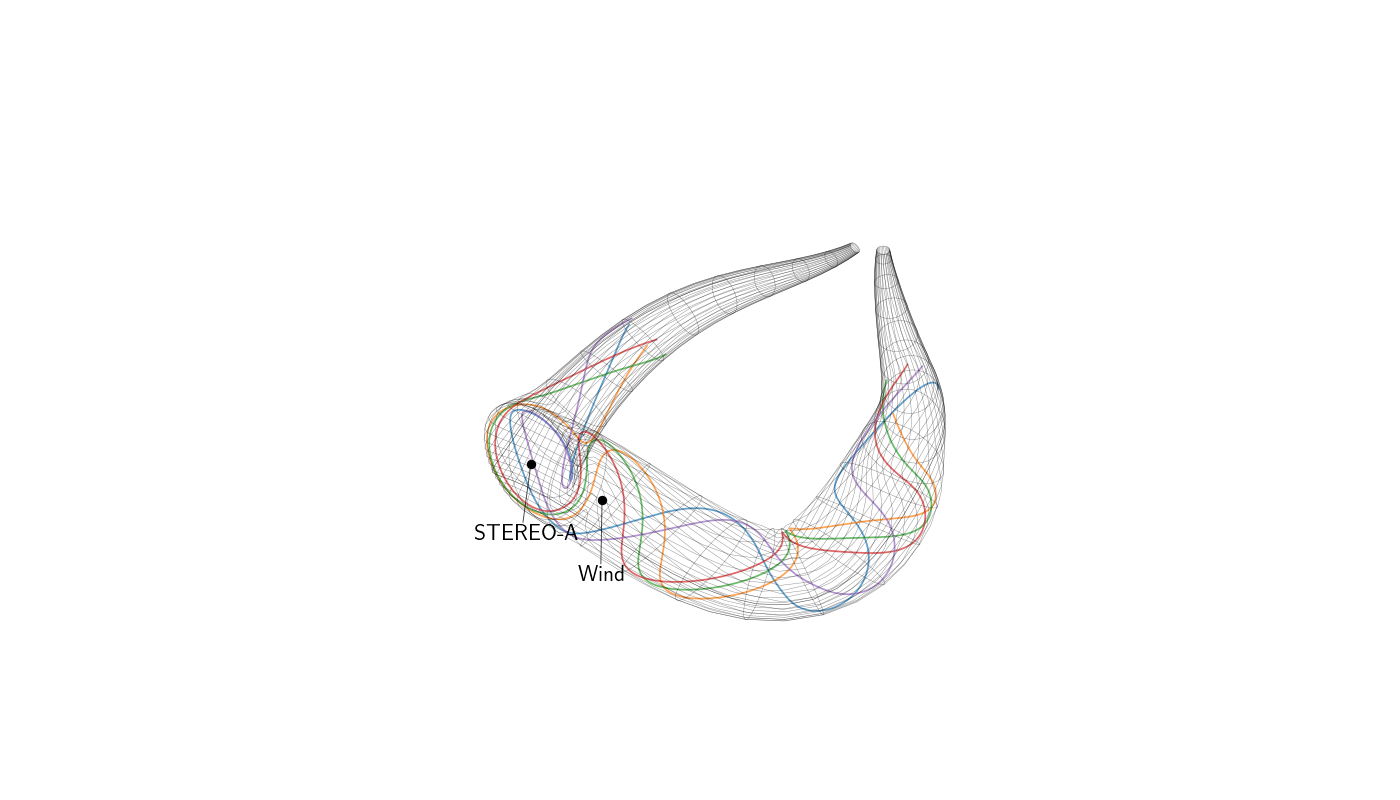Authors: Andreas J. Weiss (NASA Postdoctoral Program Fellowship, NASA GSFC), Teresa Nieves-Chinchilla (Heliophysics Science Division, NASA GSFC), Christian Moestl (Austrian Space Weather Office, GeoSphere Austria)
Magnetic flux ropes within interplanetary coronal mass ejections are often characterized as simplistic cylindrical or toroidal tubes with field lines that twist around the cylinder or torus axis. Recent multi-point observations suggest that the overall geometry of these large-scale structures may be significantly more complex, so that the contemporary modeling approaches would be, in some cases, insufficient to properly understand the global structure of any interplanetary coronal mass ejection. In an attempt to partially rectify this issue, we have developed a novel magnetic flux rope model that allows for the description of arbitrary distortions of the cross-section or deformation of the magnetic axis. The distorted magnetic flux rope model is a fully analytic flux rope model, that can be used to describe significantly more complex geometries and is numerically efficient enough to be used for large ensemble simulations. To demonstrate the usefulness of our model, we focus on a specific implementation of our model and apply it to an ICME event that was observed in situ 2023 April 23 at the L1 point by the Wind spacecraft and also by the STEREO-A spacecraft that was 10.2 deg further east and 0.9 deg south in heliographic coordinates. We demonstrate that our model can accurately reconstruct each observation individual and also gives a fair reconstruction of both events simultaneously using a multi-point reconstruction approach, which results in a geometry that is not fully consistent with a cylindrical or toroidal approximation.


